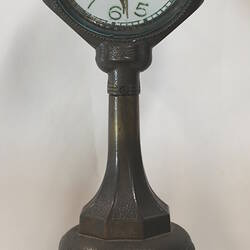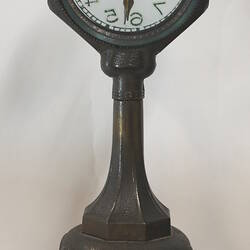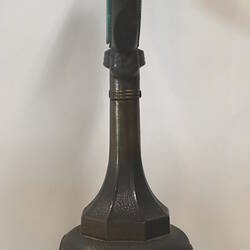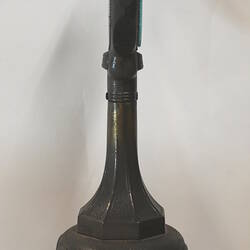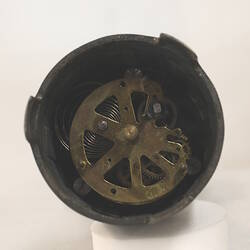Summary
Mystery clock, made by Mauthe, Germany, circa 1925.
Mystery clocks first appeared in Europe in the 19th century. They are named as such due to their mechanism not being clearly visible, the clock or watchface, often being transparent. The secret to the mystery clock is due to a fine craftsperson clevery concealing the mechanism within the frame or border of the timepiece. There are also examples where a clear mechanism is used in the clockface which at first is not easily detected.
Physical Description
Consists of hands on an arbor between two round glass plates in octagonal metal frame. The hands are rotated by rings attached to ends. Movement in base. Clock face supported on column. Spring wound; dead beat pin pallet escapement.
More Information
-
Collecting Areas
-
Acquisition Information
Loan & Subsequent Bequest from Mr John Askew, 30 Apr 1928
-
Maker
-
Classification
-
Category
-
Discipline
-
Type of item
-
Overall Dimensions
7.5 cm (Outside Diameter)
-
Keywords

